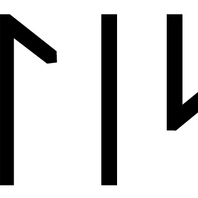
Viking Names
Blesi
The male name Blesi is found in two Swedish runic inscriptions and is also recorded as the name of one of the original settlers of Iceland. It was originally a by-name, meaning ‘blaze, white spot on a horse’s forehead’. Blesi is also the first element in the place-name Bleasby, Nottinghamshire.
Read More
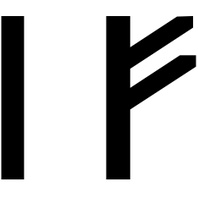
Viking Names
Ref
Refr is a fairly common male name in the Viking world. It is found in two Swedish runic inscriptions and may originally have been a nickname, as it means ‘fox’. It forms the first element of Revesby, Lincolnshire.
Read More
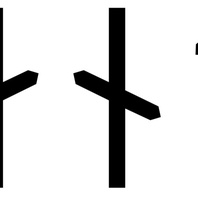
Viking Names
Sandi
Sandi is either a short form for names in Sand- or an original byname from Old Norse sandr ‘sand’. A single instance of Sandi is recorded as a byname in West Scandinavia. It is also recorded in Sweden. Sandi is also the first element in the place-name Saundby, Nottinghamshire.
Read More
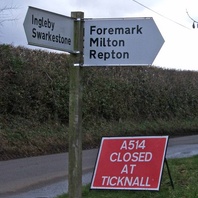
Viking Names
Foremark
Foremark, in the Repton and Gresley Hundred of Derbyshire, is a Scandinavian compound formed from the Old Norse elements forn ‘old’ and verk ‘work’. Thus, ‘old fortification’. The element verk undoubtedly was used in the Danelaw to describe a military or defensive structure; however, the element does not appear to be found in Scandinavian place-names. The place-name corresponds to the Old English place-name type Aldwark ‘old fortification’. One Aldwark is located in the Wirksworth Hundred of Derbyshire, and is situated near The Street, a Roman road, and Portway. Similarly a short distance east of Wall Hill and Foremark are raised earth formations, which perhaps could be the site of the original fortification. Furthermore, Foremark is very close to a known Great Heathen Army winter camp at Repton. Recent work by Dr Catrine Jarman has raised the possibility that Foremark is somehow related to that site, as outlined in a 2019 television programme, Britain’s Viking Graveyard.
Read More
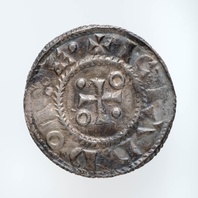
Viking Objects
Sihtric Caoch Silver Penny (CM.34-2000)
A sword and cross type silver penny of Sihtric Caoch (Sihtric Cáech) minted for the Viking kingdom of Northumbria. Sihtric Caoch was the Scandinavian ruler of Dublin from 917-920 CE and subsequently the ruler of Northumbria from 921-927 CE. It is not certain why he left Ireland. The Irish annals state that it was ‘through the grace of God’ and do not elaborate on the politics behind his departure. After the establishment of the Danelaw, some Viking leaders decided to mint their own coins to solidify their legitimacy in the eyes of the local populace. This created a hybrid economy where some members of the Danelaw used bullion and others used coins. This coin was part of a hoard of twelve coins found at Thurcaston between 1992 and 2000. The coins are Anglo-Saxon, Arabic and Viking issues, and show the diverse and wide-ranging contacts between societies at this time. The hoard was probably deposited c.923-925 CE, approximately five years after Leicester had been retaken by Mercia (c.918 CE). They indicate that a bullion economy was still operating in the Danelaw as late as the 920s. This suggests that the reconquest did not manage to institute Anglo-Saxon practices such as a monetary economy immediately.
Read More
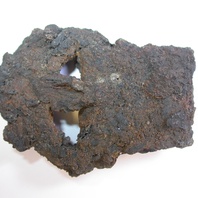
Viking Objects
Iron Buckle (1985/225-8)
An iron buckle found in Mound 6 at Heath Wood, Ingleby, Derbyshire. It is one of two iron buckles found in this burial mound together with a small number of bronze fragments and iron nails. This buckle has parallels in Scandinavia.
Read More
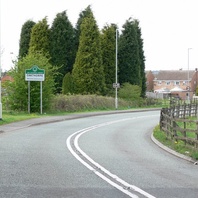
Viking Names
Oakthorpe
Oakthorpe, historically belonging to the Repton and Gresley Hundred of Derbyshire, probably comes from the Old Norse male personal name Áki (genitive singular Áka) and the Old Norse element þorp ‘outlying farm, settlement’. Alternatively the first element of the place-name could be Old English ac ‘oak tree’; however, it is more likely that the Old Norse personal name became confused with this Old English appellative. Oakthorpe is a joint parish with Donisthorpe and they were both transferred to Leicestershire in 1897.
Read More
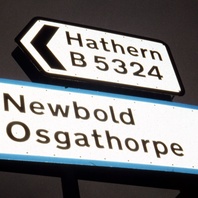
Viking Names
Osgathorpe
Osgathorpe, in the West Goscote Hundred of Leicestershire, comes from the Old Danish male personal name Asgot (Old Norse Ásgautr) and the Old Norse element þorp ‘outlying farm, settlement’. Some later forms of the name show replacement by the Norman male personal name Angod. In the neighbouring Thringstone in Coalville parish, the field-names Ossegodishaug and Hosgothawe (with Old English haga or Old Norse hagi ‘enclosure’) presumably record the same owner of land.
Read More
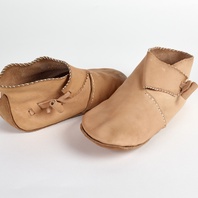
Viking Objects
Reproduction Shoes
A pair of leather turnshoes based on examples found at Coppergate, York. The shoes are vegetable tanned and fastened by a toggle on the side.
Read More
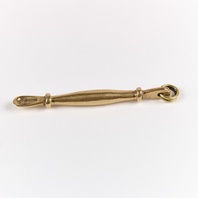
Viking Objects
Reproduction Ear Scoop
An ear scoop (or ear spoon) was a common personal hygiene tool, used for cleaning out the ears. Ear spoons are known from Roman times onwards. They are very common finds on Viking Age sites, suggesting that people took this aspect of personal hygiene very seriously.
Read More
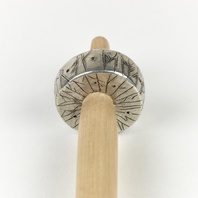
Viking Objects
Reproduction Drop Spindle
A reproduction of a lead alloy spindle whorl with a runic inscription, modelled on a find from Saltfleetby St Clement, Lincolnshire. Fibres were spun into thread using a drop-spindle of which the whorls were made of bone, ceramic, lead, or stone and acted as flywheels during spinning.
